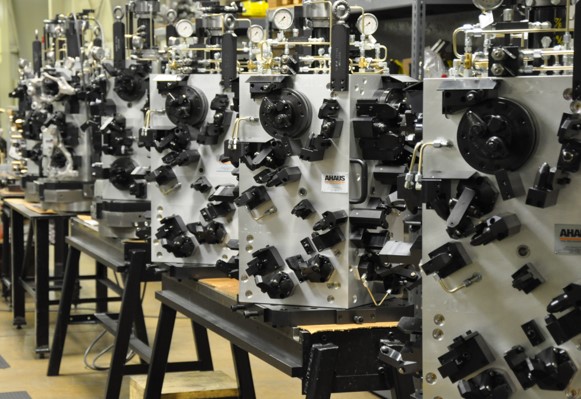Workholding is an essential yet relatively unsung aspect of any manufacturing or machining operation. Regardless of the production requirements of a workpiece, workholding fixtures will very likely play a critical role in its processing.
Whether machining, milling, drilling or lathing, each setup is unique and calls for a “customized” approach to securing that part in place for the work to be performed. Some production endeavors are quite complex. But today’s workholding systems are adaptable to just about any situation and require less operator intervention than ever before.
Custom Hydraulic Workholding Fixtures Provide Flexibility
Manufacturing outfits and machine shops are always seeking ways to increase production while also minimizing waste, limiting man hours and generally keeping costs down. The latest hydraulic workholding fixtures help entities achieve these goals by automating processes that were once somewhat cumbersome and labor-intensive.
Where operators were once required to physically maneuver parts into position and manually clamp and secure each individual workpiece for processing, automated workholding systems now perform these tasks, providing for faster production times and a vastly improved level of repeatability. In fact, ever-expanding workholding technologies enable hydraulic and pneumatic fixtures to be precisely programmed. These systems also have the ability to automatically adjust to various workpiece thicknesses and configurations.
With automated, easy-to-adjust hydraulic vises and clamps, slow and often laborious efforts to load and unload parts are also becoming a thing of the past. Additionally, operators are safer due to the fact they rarely find themselves in awkward positions as they attempt to secure a part. With the virtual elimination of these duties, their time can be used much more effectively.
In a precision machining environment where the workload is heavy and the schedule is demanding, the benefits of customizable hydraulic vises and workholding fixtures are numerous. The evidence of this lies in the numbers, both production-wise and within the financial ledgers.


